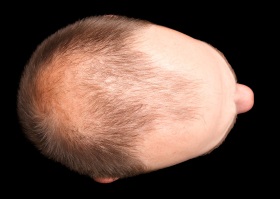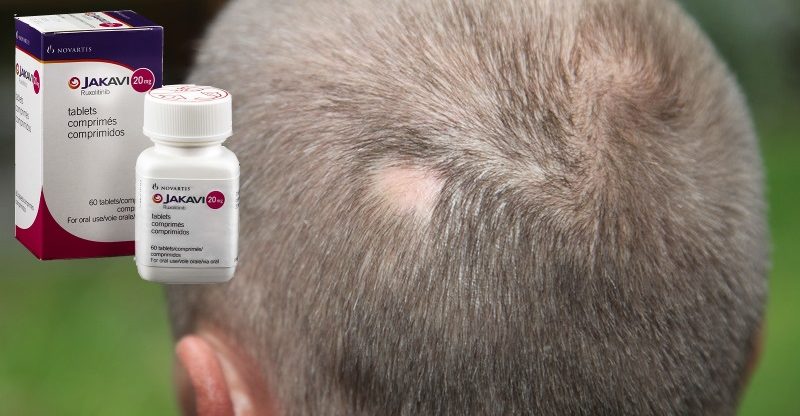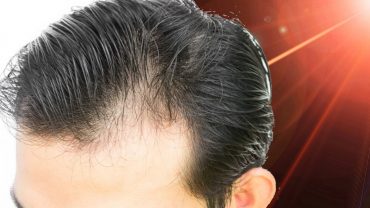Ruxolitinib – Alopecia Areata Cure?
Alopecia Areata is a frustrating disease in which hairs falls out in circular patches anywhere on the scalp. In medical terminology, it is referred to as disfiguring autoimmune disease. Now, a new ruxolitinib alopecia areata cure may be the answer.
This isn’t a contagious disease, since nerves doesn’t have any part to play in its occurrence. It’s a result of the clash between the immune system and hair follicles, where the root structure is severely affected. It not only affects the patient’s self-esteem, appearance and confidence level. If left untreated, it may lead to other Alopecia related issues as well.
Therefore, scientists are trying hard to find an alopecia areata cure that is suitable for males and females. This has remained a daunting task so far, as all efforts have led to inadequate results. Now there’s been a breakthrough in this regard. Scientists are claiming a ruxolitinib and Jak inhibitor combo as potentially helpful and productive in treating alopecia areata. Let’s explore how and to what extent can these help.
What are JAK Inhibitors?
JAK Inhibitors, Janus kinase inhibitors or Jakinibs are all names of the same medication that inhibits the activity of any one or more of the Janus kinase family of enzymes. For your information JAK1, JAK2, JAK3 and TYK2 are part of the Janus kinase family of enzymes. By inhibiting any one of them, it basically attempts to interfere with the JAK-STAT signalling pathway.
This article focuses on a compound of JAK Inhibitors called ruxolitinib. Other compounds of JAK Inhibitors include Tofacitinib (brand name Xeljanz/Jakvinus), which is effective against JAK 3. Tofacitinib has been approved by the FDA for treating rheumatoid arthritis. Also included is Oclacitinib (brand name Apoquel), which is effective against JAK 1. The FDA has approved it for controlling allergic dermatitis and atopic dermatitis.
What is Ruxolitinib?
Ruxolitinib (brand name Jakavi/Jakafi) is being termed as a miracle product. It cannot fully cure alopecia areata, but it is definitely helpful in treating it. Ruxolitinib is a compound of JAK Inhibitors that is effective against JAK1 and JAK 2. It has been approved by the US Food and Drug Administration (FDA) for treating a number of diseases including myelofibrosis.
The drug performs its task by blocking specific enzymes present in the body, which are responsible for affecting blood cell production. It is greatly helpful and commonly used in treating bone marrow disorders, but it can prove to be useful in any disease that hinders or affects our body’s function of producing fresh blood cells.
JAK Inhibitors and Ruxolitinib Alopecia Treatment
Nowadays, efforts are underway for using JAK inhibitors and ruxolitinib alopecia areata treatments. At the moment, it is hard to cure the disease fully, but it is definitely possible to treat it using the JAK Inhibitor/ruxolitinib combo.
So how can we say that JAK-ruxolitinib are effective in treating alopecia areata? Overall, with JAK inhibitors, and specifically its compound ruxolitinib, alopecia areata treating properties were proven in a small study carried out by Columbia University Medical Center (CUMC).
The study was conducted on 12 alopecia areata patients, while the results were published in the Journal of Clinical Investigation/Insight. According to the research team member Julian Mackay-Wiggan, the study provided crucial evidence that JAK inhibitors “may constitute the first effective treatment for people with alopecia areata,”. Patients experienced a 92% increase in their average hair growth.
In another study published in Nature Medicine in 2015, a research team led by Dr. Angela Christiano from Columbia University, New York, experimented with the JAK Inhibitor compound ruxolitinib on three patients. The participants took two pills daily and within 4-5 months, researchers saw a remarkable difference. The effects of Alopecia Areata were substantially reversed without any particular side-effects.
How does a JAK Inhibitors Alopecia Areata Treatment Work?
We do know that certain JAK enzymes are responsible for regulating the hair growth cycle. As mentioned above, JAK inhibitors’ compound drug ruxolitinib can serve as a potential cure for alopecia areata. This type of hair loss is not caused by genetics or lifestyle factors, but is an autoimmune condition in which hair follicles get stuck in telogen phase. So a drug like ruxolitinib can impact the normal cell/follicle growth cycle, and be effective in treating the disease.
The treatment involving JAK Inhibitor drug ruxolitinib targets the enxymes of the hair follicles. These hair follicles actually maintain their dormant state when alopecia areata occurs. The ruxolitinib alopecia areata treatment can stir the follicles to such extent that these come out of their telogen phase and resume active growth.
Can Ruxolitinib Work for Regular Male and Female Pattern Balding?
There’s going to have to be a lot more research conducted before we can answer this question. So far, ruxolitinib has only shown results for treating alopecia areata, but it’s a long road ahead. There is a considerable difference between alopecia areata and regular pattern balding. Alopecia’s literal meaning is Hair Loss, but this doesn’t refer to balding. With balding, our scalp loses all of its hair.
Androgenetic Alopecia (Male and female pattern balding) occurs due to a hormonal imbalance, where hair loss occurs from the central portion of the scalp. This is largely thought to be connected to the hormone Dihydrotestosterone (DHT), and you can read all about this in the article ‘DHT and Hair Loss’.
Here is what pattern balding (androgenetic alopecia) looks like:

Male Pattern Baldness Top View
Alopecia areata however, is an autoimmune disorder which is specifically associated with hair loss in the form of patches or circles. Usually the hair loss remains persistent, even if the hair grows again on the patchy area. These hairs can fall out again and this may go on for several years. You can read more about alopecia areata in our article on patchy hair loss.
Here is what patchy balding (alopecia areata) looks like: Medical News Today
When considering the effectiveness of ruxolitinib, alopecia in general is too broad of a condition to focus on. There are several types of alopecia with different causes. A drug like ruxolitinib can be effective for one type, but not for another, based on the drug’s mechanism of action. There are plans to expand studies in this area, but for now we’ll just have to stay tuned. In the meantime, there are ways to treat regular hair loss, such as this daily routine.
What Does the Future Hold?
Researchers’ claims, latest studies and their successful results all make a ruxolitinib alopecia areata treatment look very promising for the future. We could even be looking at an alopecia areata cure sooner than we thought. Still, larger studies are required to be conducted on the potential side-effects of the drug.
It is yet to be seen whether ruxolitinib can be harmful for body tissue or not and to what extent JAK inhibitors are effective in permanent hair regrowth. It is important that extensive research and full clinical trials are conducted to evaluate whether these drugs can be widely used for treating alopecia or not. As far as the current studies’ conclusions are concerned, we have every reason to feel optimistic about what lies ahead.








